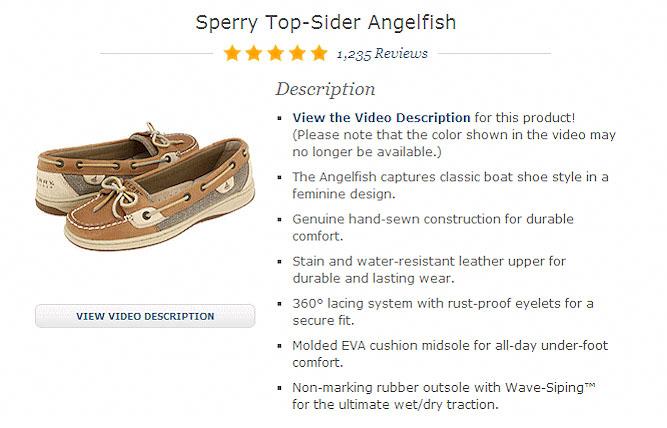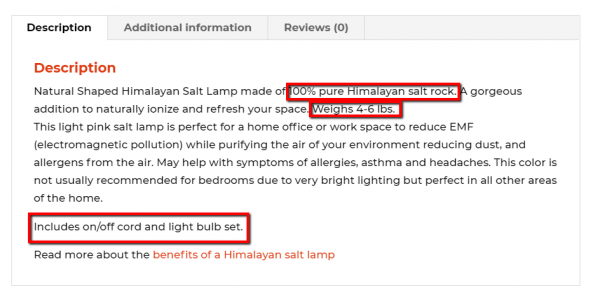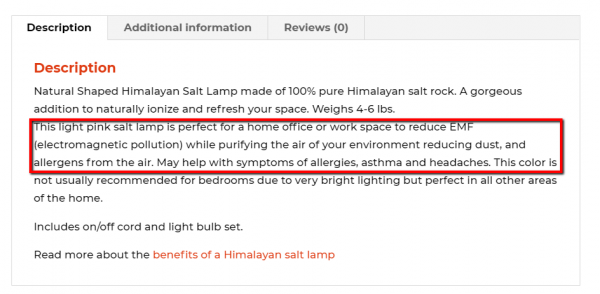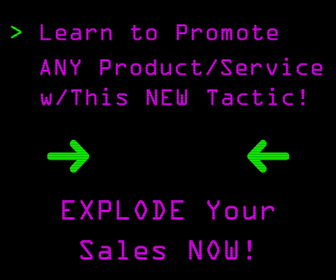 For those new to the product description scene, it is a form of marketing copy that explains what a company is selling and why buyers should purchase it. For a product description to be good, it should convey essential information about the benefits and features of the product. However, it’s easy to make mistakes and not write the best type of product descriptions. Let’s look at 5 techniques to focus on to create compelling product descriptions that will help sell products. Want to learn further tips on how to develop a profitable online business? Chat with us during our free webinar training!
For those new to the product description scene, it is a form of marketing copy that explains what a company is selling and why buyers should purchase it. For a product description to be good, it should convey essential information about the benefits and features of the product. However, it’s easy to make mistakes and not write the best type of product descriptions. Let’s look at 5 techniques to focus on to create compelling product descriptions that will help sell products. Want to learn further tips on how to develop a profitable online business? Chat with us during our free webinar training!
1. Watch your tone
Business Know-How recommends keeping an eye on your tone while writing job descriptions. They tell us that not only should the tone of your products match, but they should also align with the language on the rest of your website.
The tone of your product description should match the tone of not just the product you’re selling but also the business as a whole. For example, the website of an online toy company will likely feature more whimsical descriptions than a business selling life insurance.
When crafting product descriptions, it’s important to let your writing style convey your tone rather than state it outright. Instead of saying that your company is committed to helping the environment, try mentioning that your product is made using recyclable ingredients. Similarly, it’s better to incorporate humor into your product description than to say you’re a fun-loving company.
2. Focus on the ideal buyer
Are you focusing on getting the perfect buyer? This should be every business’ goal, which is why Shopify says you should write your product descriptions with a large crowd of buyers in mind. That also means you should engage with your audience instead of writing boring descriptions. Writing boring descriptions make it less likely for anyone to want to buy your products.
When you write a product description with a huge crowd of buyers in mind, your descriptions become wishy-washy and you end up addressing no one at all.
The best product descriptions address your target audience directly and personally. You ask and answer questions as if you’re having a conversation with them. You choose the words your ideal buyer uses. You use the word you
This is how Think Geek starts the product description of an LED Flashlight.
You know what's sucky about regular flashlights? They only come in two colors: white or that yellowish-white that reminds us of the teeth of an avid coffee drinker. What fun is that kind of flashlight? We'll answer that: NO FUN AT ALL. You know what is fun? Using the Multi-Color LED Flashlight to cast a sickly green glow over your face while telling a zombie story around a campfire. No campfire? Make a fake one with the orange light!
When it comes to writing your own product descriptions, start by imagining your ideal buyer. What kind of humor does he or she appreciate (if any)? What words does he use? What words does he hate? Is he okay with words like sucky and crappy? What questions does he ask that you should answer?
Consider how you would speak to your ideal buyer if you were selling your product in store, face-to-face. Now try and incorporate that language into your ecommerce site so you can have a similar conversation online that resonates more deeply.
3. Avoid bland phrases
Another tip Shopify gives us is to avoid bland phrasing, which we just hinted at on #2. It’s hard for potential buyers to want to buy something if the product and description don’t jump out at them. Don’t be afraid to spice up the specifications and focus on creating ones that make potential buyers want to click and buy that product asap.
When we’re stuck for words and don’t know what else to add to our product description, we often add something bland like “excellent product quality”.
That’s a yeah, yeah phrase. As soon as a potential buyer reads excellent product quality he thinks, yeah, yeah, of course; that’s what everyone says. Ever heard someone describe their product quality as average, not-so-good, or even bad?
You become less persuasive when your potential buyer reads your product description and starts saying yeah, yeah to themselves. To avoid this reaction be as specific as possible. Zappos, for instance, doesn’t describe the quality of a pair of shoes as excellent. Instead they describe each technical detail plus its benefit.
None of the bullet points above mention the quality of the product directly, but each point gives you an impression of quality. Each point also follows an easy pattern of highlighting a feature plus a benefit:
genuine hand-sewn construction (feature) >> durable comfort (product benefit)
Product details add credibility. Product details sell your product. You can never include too many technical details in your product descriptions. Be specific.
4. Know your buyers
Of course, it’s hard to get sales on your site if you don’t know your buyers. That’s why Business Know-How shares with us how vital it is to take the time to get to know your audience. If you know what their interests are and what they are looking for in products, then you’ll be more likely to sell things to them.
It’s impossible to craft product descriptions that will lure your target audience if you don’t know who comprises this group. Before writing a description, take time to assess your customers’ needs and create one or more buyer personas, or imaginary representations of your ideal customers.
Start by considering the reasons these individuals would want to buy your product. Once you’ve identified the dearth your product fills in their lives, you can craft a description that explains how your item satisfies that need. Additionally, you should specify why a buyer should choose your product over one offered by a competitor. The goal is to create a unique product description for every category of buyers.
5. Focus on product benefits
Your products have benefits, which is precisely why Referral Candy Blog points out just how important it is to sell those benefits! Focusing on the best parts of the products you’re selling will show off its incredible design, uses, etc.
As a business owner, you are understandably excited to share all of the qualities of your products. You want to show that your product has the best features and most unique specs.
The buyer, however, is not necessarily interested in the mundane features of the product. Instead, they want to know how it can benefit them.
A product feature is a factual statement about the product that provides technical information. A product benefit, on the other hand, tells how the product can improve the buyer’s life.
If we take a closer look at the product description of the very unique item from above, we can see the key features of the product as well as the benefits.
In this product description, the product features include 100% pure Himalayan salt, a weight of 4-6 lbs., and an on/off cord and light bulb set.
The product benefits include reduced EMF pollution, purified air, and reduced symptoms of allergies, asthma, and headaches.
Another example can be found in the product description at The Yankee Candle Company for their sample-size votive candle.
So what makes this candle so special? Well, the answer lies in the direct benefits that it will bring to the buyer.
They clearly outline the benefits of owning this tiny candle, most of which center around convenience. Rather than pushing the generic scent or even the role of a candle in the home, they are highlighting the benefit of having this particular sample size candle.
The main benefits that customers can expect from this candle are:
You can sample this scent without investing in a bigger, more expensive candle.
It is the perfect size for small moments throughout the day.
It is a great addition to a bigger focal point, such as a centerpiece at dinner parties.
It is safe and easy to use. You can essentially light the candle and walk away.
The content of your product description should convince the potential buyers that it will improve their lives in obvious, measurable ways.
Before you begin writing your product descriptions, make an outline of the features and benefits of your product. Think about how the product either increases pleasure or reduces a pain point.
For every feature that you list, figure out how this will directly benefit the buyer.
If the feature is 100% Himalayan salt, then the benefit is reduced allergies.
If the feature is a 1.75 ounce candle, the benefit is that it can be used in small spaces, such as a nightstand, a bathroom, or an end table.
Translating features into benefits like this will help you write more persuasive product descriptions and more quickly.
There are many more ways to write product descriptions that sell, as well as improve the content on your website. We hope to see you during our free webinar training so you can learn additional ways to sell products and attract an audience to your website!
Sources: Shopify, Business Know-How, Referral Candy Blog
CHALLENGE Yourself to Profit!
Free Download: Build Your Profit-Generating Online Business With This Free Blueprint
Sign Up, follow the easy steps and You'll get the tactics, strategies & techniques needed to create your online profit stream. It's free!






